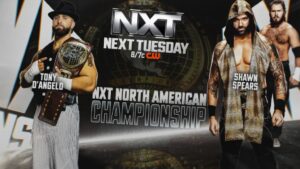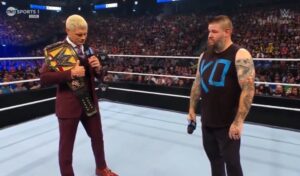Wrestling Meccas is a series of features at Last Word on Pro Wrestling that looks at the history of some of professional wrestling’s most iconic venues, from large stadiums to small indie havens. Our first edition kicks off with arguably the world’s most famous wrestling venue, New York City’s Madison Square Garden.
When Cornelius Vanderbilt vacated his passenger depot at the northeast corner of East 26th Street and Madison Avenue in 1871 to consolidate with the new Grand Central Terminal, little did he – or anyone for that matter – realize it was set in motion the creation of one of the world’s most famous arenas, and one of the most iconic venues in the history of pro wrestling. But leasing out the venue to various promoters for a myriad of events lead to the creation of Madison Square Garden, which has become Manhatten’s entertainment mecca and a venue that has witnessed some of pro wrestling’s greatest moments. The new owners built on Gilmore’s vision of expanding the entertainment range of the venue, adding light opera, theater, and more. But pro wrestling was safe.
MADISON SQUARE GARDEN I (1879-1890), NE Corner of East 26th Street and Madison Avenue, Manhattan, NY

Following Vanderbilt’s departure from the site (which he still owned the land and building), he first leased the venue to famed carnival promoter P.T. Barnum in 1874. Barnum named the building Barnum’s Monster Classical and Geological Hippodrome and began to bring his circus to town in more ways than one. He turned the formal railroad terminal into an open-air pavilion that could seat around 10,000 people, depending on the event. In 1875, Southern musician Patrick Gilmore (who wrote the lyrics for “When Johnny Came Marching Home” and was an early music hall star) began leasing at the building and it was rebranded as Gilmore’s Garden, adding in musical performances, beauty shows, flower shows, boxing, and of course, professional wrestling. The first wrestling card on record at the venue was held on November 24, 1875, and featured a Greco-Roman exhibition between French stars Andre Christol and Thiebaud Bauer. They would present various different wrestling styles of the day in exhibition matches, such as Greco-Roman, Collar & Elbow, and Catch-As-Catch-Can. Gilmore’s vision of expansion of avenues of entertainment would set the venue on its inevitable path of becoming what it is today. In 1879, site owner Cornelious Vanderbilt passed away, and the property was taken control by his grandson William Vanderbilt, who fixed up the venue and rebranded it with its now most famous incarnation – Madison Square Garden. On October 4, 1879, the first card at the newly branded Madison Square Garden was held, with John McMahon and William Miller fighting to a draw in the main event. In early 1880, it saw its first World Championship in pro wrestling change hands, when the inaugural World Greco-Roman Champion was crowned when New York’s own William Muldoon defeated France’s Thiebaud Bauer in front of 4,000 people in a cold January air. But by 1890, the limitations of an open-air venue in Manhattan – too hot in the summer, too cold in the winter, and uncomfortable during any inclement weather – lead to Vanderbilt selling off the land and property in 1890.

MADISON SQUARE GARDEN II (1890-1925), NE Corner of East 26th Street and Madison Avenue, Manhattan, NY

In 1890, William Vanderbilt sold Madison Square Garden to a consortium that included noted names like J.P. Morgan, P.T. Barnum, Andrew Carnegie, and William Astor. The first thing they did was tear down the open-air venue and build a new building which kept the Madison Square Garden moniker. It held a smaller 8,000 people in its main hall but created multiple smaller venues within the complex, including 1,200-seat theater and 1,500 seat concert hall. Wrestling continued to be an attraction at the arena, attracting 10,000 people for an event in March of 1898, featuring Collar & Elbow exhibitions. This venue became witness to the rise of professional wrestling from being carnival sideshows or gentlemanly exhibitions to the wild sport we’ve grown to love today. On May 4, 1905, it bore witness to the crowning of the first-ever World Heavyweight Championship for professional wrestling, when European Heavyweight Champion George Hackenschmidt defeated American Heavyweight Champion, Tom Jenkins. The second Madison Square Garden became the home of legends like Ed “Strangler” Lewis, Joe Stecher, Earl Caddock, and Stanislaus Zbyszko. But while business was booming for pro wrestling at the Garden, the building itself was a financial failure. In 1925, the New York Life Insurance Company (who owned the mortgage of the building) shut the building down and had it destroyed, making way for their own new headquarters, the now familiar landmark New York Life Building.
https://www.youtube.com/watch?v=JQl6mmAtkbE
MADISON SQUARE GARDEN III (1925-1968), Eighth Avenue and 50th Street, Manhattan, NY

In 1925, boxing promoter Tex Rickard – funded by multiple investors which became the first Madison Square Garden Corporation – built the third Madison Square Garden. Rickard made boxing the Garden’s number one priority, but wrestling remained a top attraction as well. The rise of Jim Londos saw wrestling events jump from under 10,000 in the 1920s to 20,000 in attendance in 1930, as pro wrestling became a sport that united New York’s congregation of ethnicities with its brazen athleticism. It’s popularity skyrocketed with record sell-outs, all while the country was under the hold of the Great Depression. While Tex booked most of the boxing events, he had a friend who was also in the promoting game named Roderick McMahon, although friends called him “Jess”. McMahon had been wrestling promoter since 1915, and soon McMahon began booking the Garden for pro wrestling. In 1932, Ed “Strangler” Lewis won the New York State Athletic Commission (NYSAC) World Championship for the first major title change in the third Garden, and in 1936, Dick Shikat became the first man to win the proper World Championship at Madison Square Garden since Hackenschmidt’s victory in 1905.
In 1948, Jess McMahon partnered with another promoter and former wrestler in Joseph “Toots” Mondt, and together they took over New York’s wrestling scene, which was only just rebounding following some lean years during World War II. But as the 1950s entered, Jess McMahon’s health began to deteriorate and his involvement waned. But McMahon’s son, Vincent J. McMahon, would take over the business and in 1952 formed the Capitol Wrestling Corporation (CWC). Covering territories in New York, Connecticut, and Maryland, it wasn’t long before Vince McMahon Sr. returned to his father’s old stomping grounds, debuting at the Garden in September 1957 with a main event that saw Antonino Rocca and Edouard Carpentier fight to a 40-minute time limit draw. McMahon also brought in Toots Mondt to the administrative team, and they joined the National Wrestling Alliance (NWA). In 1963, McMahon rebranded Capitol Wrestling to World Wide Wrestling Federation (WWWF) following a break-up with the NWA and in May of that year, Bruno Sammartino defeated “Nature Boy” Buddy Rogers for the WWWF World Heavyweight Championship in the final World Championship title change in the third MSG. Sammartino would become one of MSG’s biggest draws.

MADISON SQUARE GARDEN IV (1968-present)

In 1959, Madison Square Garden was purchased by real estate company Graham-Paige and a year later, Graham-Paige merged with the Madison Square Garden Corporation as one entity under the latter’s name. By the mid-60s, the new owners were already putting plans in motion to build a newer modern venue, and in 1968, the fourth and current Madison Square Garden was opened on February 11, 1968, built on top of the Pennsylvania Train Station. On February 19, the WWWF held the venue’s first wrestling card, with Bruno Sammartino defending his WWWF World Championship against Bull Ramos. On June 30, 1973, the WWWF began to air monthly programs on HBO live from Madison Square Garden, with Vince McMahon Sr.’s son Vincent K. McMahon on commentary. Madison Square Garden would become the official throne room for the WWWF, with seven of their first ten World Champion reigns crowned at MSG – Bruno Sammartino (1963 and again in 1973), Ivan Koloff (1971), Pedro Morales (1971), Bob Backlund (1978), The Iron Sheik (1983), and Hulk Hogan (1984). In 1976, WWWF on HBO moved to the network run by MSG, which became MSG Network in 1980. By 1982, Vince McMahon Jr. had purchased the WWWF from his father, which had become simply the World Wrestling Federation (WWF) in 1979.
Madison Square Garden continued to be an integral part of Vince Jr.’s expansion of the WWF into a national (and international) company, hosting the inaugural WrestleMania on March 31, 1985. MSG would go on to host WrestleMania X in 1994 and WrestleMania XX in 2004, as well as serve as the host for other top pay-per-views, SummerSlam (1998), Royal Rumble (2000, 2008), and Survivor Series (2002, 2011). Episodes of Raw, SmackDown, ECW on SyFy, and others have been filmed at MSG, although in recent years, due to production costs in the venue, WWE has opted for other venues for major events in the New York area. WWF World Champions continued to be anointed at the Garden though, with Bret “Hitman” Hart (1994), Diesel (Kevin Nash, 1994), Sid Vicious (1996), Big Show (2002), and CM Punk (2011) all winning the WWE Championship at MSG. During various brand splits, the “Big Gold” World Heavyweight Championship was won at the Garden by Shawn Michaels (2002) and Chris Benoit (2004). While no longer used for major events, Live Events at the Garden still have big moments – in July of 2017, AJ Styles won the WWE United States Championship at the Garden, while Andrade won the same title at an MSG Live Event just last December.

With WWE’s waning use of the arena in recent years, however, McMahon’s seemingly iron-clad monopoly of pro wrestling at the Garden has disappeared. On April 6, 2019, New Japan Pro Wrestling (NJPW) and Ring of Honor (ROH) united to hold the G1 Supercard, the first pro wrestling card not promoted by the McMahon family since Jack Pfefer’s last card on November 14, 1960. That night saw two more World Champions crowned at the Garden, when Kazuchika Okada defeated Jay White for the IWGP Heavyweight Championship, while Matt Taven beat Jay Lethal and Marty Scurll in a triple threat to win the ROH World Championship. In September of last year, Mexico’s AAA Lucha Libre held the PPV AAA Invading NY at MSG, but in the smaller Hulu Theater.

For 141-years, there has been a Madison Square Garden, and for 141-years, professional wrestling has not only been a part of the Garden’s extensive history but one of its most consistent attractions. A grand mecca in New York City where multiple World Champions throughout history have been crowned, it remains one of pro wrestling’s holy grounds and continues to excite both fans and wrestlers alike when the bell rings.
Research compiled in part from the work of NYProWrestling.com.
Check out our Wrestling Meccas features archive for more!
Stay tuned to the Last Word on Pro Wrestling for more on this and other stories from around the world of wrestling, as they develop. You can always count on LWOPW to be on top of the major news in the wrestling world. We provide you with analysis, previews, videos, interviews, and editorials on the wrestling world.






